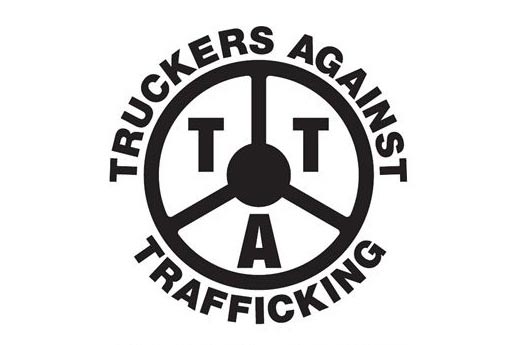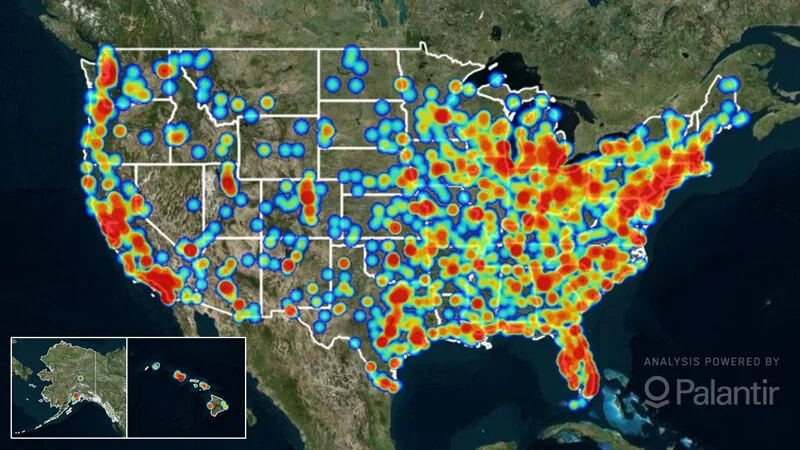Human trafficking happens all around us—in every state across communities. It is imperative for truck drivers to be prepared to identify victims they may encounter along their routes. With the right tools, truck drivers can save victims from continued abuse and exploitation.
Formal training opportunities exist to equip truck drivers with the know-how to identify and act when they notice possible human trafficking. This can empower drivers to feel confident intervening in safe and smart ways to help victims escape their traffickers.
Human trafficking training for truck drivers will help you understand trafficking’s prominence, effects on victims and warning signs to report to authorities. The training components will give you the information you need to make a difference in communities across the country.
Why Truck Drivers are Key to Stopping Human Trafficking
Truck stops are one of the most common places for trafficking victims to be—whether being transported or sold for illicit activities. That makes truck drivers, who can often be solicited for these services or near where the services are being offered, the first line of defense for victims.
Having the qualifications to effectively examine people and situations around you can help you prevent and stop human trafficking. While driving a route, your newfound awareness can help you completely change the trajectory of a victim’s life.
Truck drivers are hard-working people dedicated to their jobs. As an industry, truck drivers have the ability to apply the same dedication to human trafficking. Working together can help end the suffering of countless men, women and children who are victimized by traffickers.
Where Can Truck Drivers Find Human Trafficking Training?
Truck drivers can get certified by nonprofit Truckers Against Trafficking with training and resources to combat human trafficking. By completing the certification, you’ll receive a bumper sticker to show your commitment to protect victims and signify the training you’ve done.
The training provides trucker-specific tips that go beyond general advice. As a truck driver, you’ll gain tailored insight that applies to your unique situation, most notably truck stop activity. You will learn how to determine whether people around you could be at risk or in danger.

A plethora of resources exist online to help truck drivers continually educate themselves about human trafficking. Watching or reading firsthand accounts from survivors can help you recognize the significant impact of trafficking on victims and their communities. Additionally, educating yourself on trends, data, signs and ways to help can enhance your impact.
What Are Ways to Spot Human Trafficking at Truck Stops?
One of the most straightforward indicators of human trafficking is often age. Young girls or boys who are visibly underage soliciting for illegal activity is clearly a red flag. If you ever suspect a child is in danger, you should always contact authorities.
There are a variety of ways to spot human trafficking, including:
- Women and children who look out of place.
- Sex ads from Citizens Band (CB) short-circuit radios.
- Women, men, children and/or their traffickers advertising prostitution.
- Malnourishment and/or signs of physical abuse.
- Lack of eye contact or natural social interaction.
- Someone who seems submissive, fearful or paranoid.

Remember that no one who is trafficked is a willing participant in the subsequent behavior. Victims are controlled by fear, coercion, bribery, violence and other tactics employed by traffickers. Their traffickers force their behaviors and keep any profits from the illegal activity.
The map above from the Polaris Project depicts the number of calls to the National Human Trafficking Hotline in 2019.
How to Help Victims of Human Trafficking as a Truck Driver
Being able to assist victims requires training about the discreet ways that traffickers control, manipulate and even disguise their victims. Many truck drivers are eager to learn how to help victims of human trafficking—especially if they think they’ve witnessed problematic behaviors in the past and were unsure what to do.
Know that you should never approach potential victims or their traffickers if you suspect illegal activities. This could create an unsafe situation for you and the victims, prompting the trafficker to flee the area and further abuse their victims as retribution.
You should instead carefully alert the national human trafficking hotline or local authorities with as much detail as you can provide. Trained professionals in law enforcement can effectively intervene based on your information.
Your Roadmap to Making a Difference
Midwest Carriers encourages human trafficking training for truck drivers to identify victims and stop the crisis. Join our team of dedicated drivers who care about helping others.
Heat map: https://polarisproject.org/2019-us-national-human-trafficking-hotline-statistics/